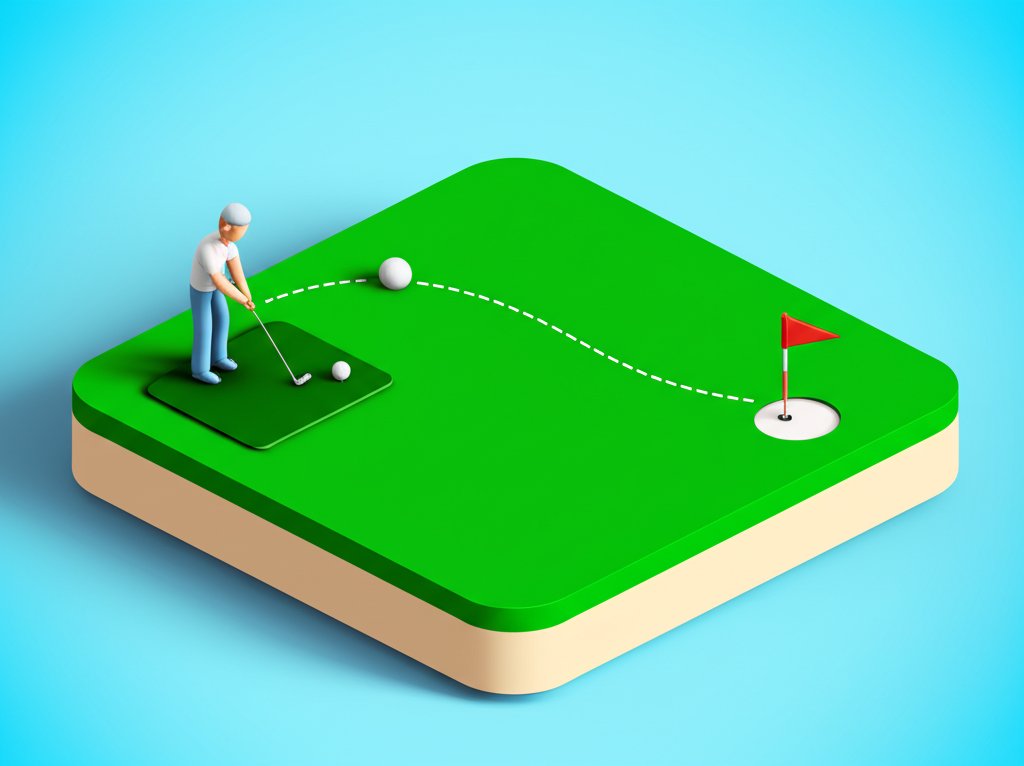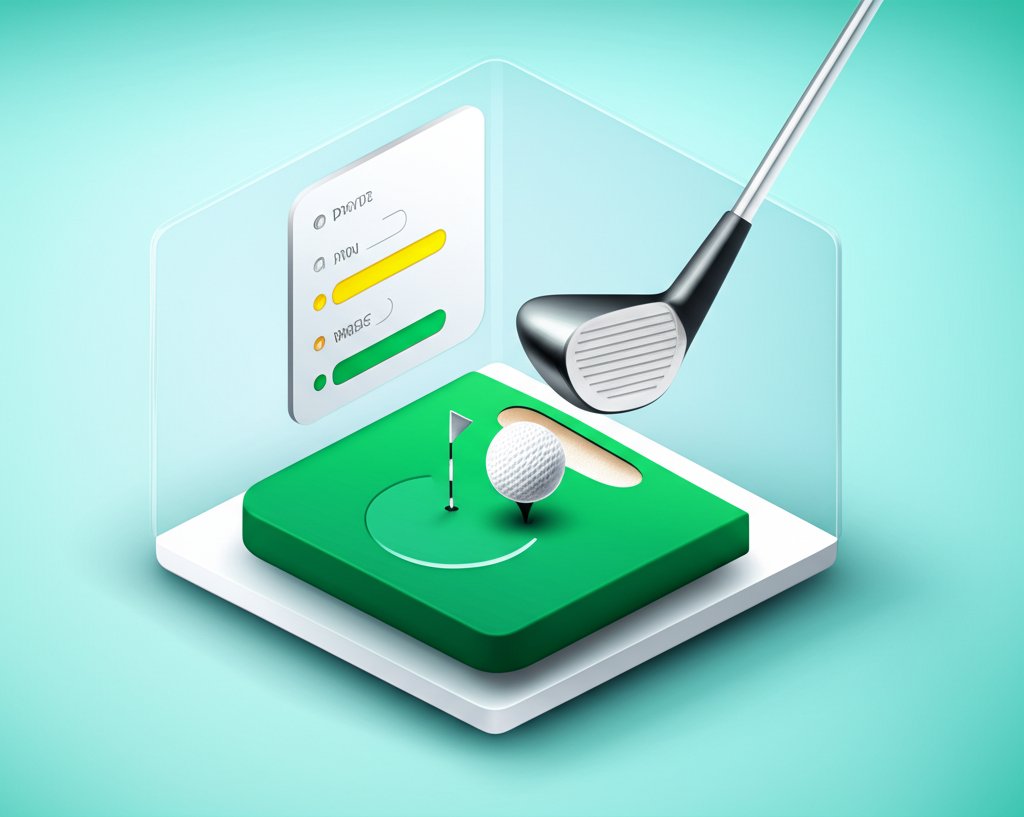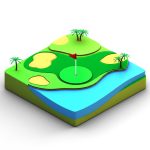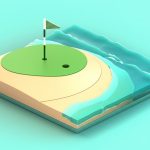Do you ever wonder why some golfers seem to effortlessly choose the perfect club, while others struggle with misjudgments? The secret often lies in a deep understanding of golf club distances. Knowing precisely how far you hit each club isn’t just helpful; it’s a game-changer that empowers you to make smarter decisions, optimize your practice, and ultimately, achieve lower scores. This comprehensive guide will illuminate the average distances for various player types, arm you with a method to determine your own unique yardages, and provide expert tips for maximizing every swing. Ready to refine your course management and consistently hit those greens in regulation?
Why Knowing Your Golf Club Distances Is Crucial

Understanding your personal golf club distances is a cornerstone of effective course management and consistent play. It’s not about ego or comparing yourself to tour pros; it’s about strategic decision-making that directly impacts your score.
By accurately charting your distances, you will:
- Make Smarter Choices: Confidently select the right club for every shot, avoiding hazards and landing closer to your target.
- Improve Course Management: Develop strategic layups and approach shots, optimizing your chances for pars and birdies.
- Identify Areas for Improvement: Pinpoint clubs where your distance or consistency might need attention, guiding your practice sessions.
- Practice More Effectively: Set specific, measurable distance goals, making your range time more productive.
- Boost Confidence: Step onto the tee or into the fairway with a clear plan, reducing indecision and improving focus.
In essence, a precise understanding of your golf club yardages unlocks a deeper understanding of your game, leading to more enjoyable rounds and consistently lower scores.
The Science Behind Your Shot: Factors That Influence Distance
Several critical elements orchestrate how far your golf ball travels. Gaining insight into these essential factors impacting golf club distance can significantly improve your precision and control:
- Swing Speed: The velocity of your clubhead at impact is a primary driver of ball speed and, consequently, overall distance. Faster swing speeds generally translate to longer shots.
- Ball Speed: This refers to the speed of the golf ball immediately after it leaves the clubface, directly correlating with how far it will fly. It’s a direct result of swing speed and strike quality.
- Smash Factor: An efficiency metric, the smash factor indicates how well you’ve transferred energy from the clubhead to the ball. Calculated as Ball Speed divided by Club Speed, a higher smash factor (closer to 1.50 for a driver) means more efficient power transfer and optimal strike.
- Launch Angle: The vertical angle at which the ball departs the clubface after impact. An optimal launch angle, in conjunction with spin rate, ensures maximum carry and efficient flight for each club.
- Carry Distance: The distance the ball travels purely through the air before its first bounce. This is crucial for clearing hazards and accurately judging approaches.
- Roll Distance: The additional distance the ball covers on the ground after landing, contributing to the total distance. This is highly dependent on turf conditions, ball spin, and landing angle.
- Club Specifications: The loft, shaft length, and clubhead design all play a significant role. Modern clubs, with larger sweet spots and lighter shafts, are designed to maximize ball speed and forgiveness.
Modern golf technology, such as launch monitors and GPS devices, has revolutionized player analysis. These tools can accurately measure these variables, providing personalized data that is invaluable for building a precise club distance chart.
The Evolution of Golf Clubs and Their Impact on Distance
Golf club design has evolved dramatically, directly influencing how far each club travels. Manufacturers started creating cavity-back golf clubs in combination with lower lofts, particularly in irons.
| Clubs | Average Lofts 2022 | Average Lofts 1990 |
|---|---|---|
| Driver | 8° – 13° | 9° – 14° |
| 3 Wood | 13° – 15° | 15° – 17° |
| 5 Wood | 20° – 23° | 21° – 24° |
| 2 Iron | 18° – 20° | 20° – 22° |
| 3 Iron | 21° – 24° | 23° – 25° |
| 4 Iron | 25° – 28° | 28° – 30° |
| 5 Iron | 28° – 31° | 31° – 33° |
| 6 Iron | 32° – 35° | 35° – 37° |
| 7 Iron | 36° – 38° | 39° – 41° |
| 8 Iron | 40° – 43° | 43° – 47° |
| 9 Iron | 45° – 48° | 48° – 50° |
| Pitching Wedge | 47° – 50° | 51° – 54° |
Every modern iron is typically between 2 and 5 degrees lower in loft compared to clubs from prior decades. This reduction in loft automatically increases distance by up to 15 yards per iron, assuming consistent strike and swing speed. Driver lofts maintain a similar range, as excessively low lofts become unmanageable unless a golfer possesses an incredibly fast swing speed. For slower swing speeds, higher-lofted woods or hybrids are often recommended as low-lofted clubs are harder to launch effectively.
Understanding Smash Factor
Smash Factor is a critical metric for evaluating the efficiency of your ball striking. It’s calculated as:
Smash Factor = Ball Speed / Club Speed
For example, a 150 mph ball speed divided by a 100 mph swing speed results in a 1.50 Smash Factor. This number indicates how much energy is transferred from the clubhead to the golf ball at impact. Lower numbers signify less efficient energy transfer, while higher numbers mean you’re maximizing the power delivered to the ball. The optimum Smash Factor for excellent ball striking with a driver is generally considered 1.50.
PGA Tour golfers, as the world’s elite, demonstrate near-optimal smash factors. Their averages provide a benchmark for how efficiently energy can be transferred through each club.
| Club | PGA Tour Average Smash Factor |
|---|---|
| Driver | 1.49 |
| 3 Wood | 1.48 |
| 5 Wood | 1.47 |
| Hybrid | 1.46 |
| 3 Iron | 1.45 |
| 4 Iron | 1.43 |
| 5 Iron | 1.41 |
| 6 Iron | 1.38 |
| 7 Iron | 1.33 |
| 8 Iron | 1.32 |
| 9 Iron | 1.28 |
| Pitching Wedge | 1.23 |
Notice how the smash factor gradually decreases as the loft of the club increases, reflecting the changing dynamics of impact with different club types.
Environmental Factors: Adjusting for Altitude, Temperature, and Humidity
Environmental conditions play a significant, often overlooked, role in determining how far your golf ball travels. Understanding these factors allows for more accurate club selection, especially when playing in varied climates or elevated locations.
- Altitude: The thinner air at higher altitudes offers less resistance to the golf ball, allowing it to travel further. This effect is measurable: for every 1,000 feet of elevation above sea level, your ball can travel approximately 1% further.
- Temperature: Warmer air is less dense than colder air, resulting in less drag on the ball. An increase of 10°F can add about 1-2 yards to your shots.
- Humidity: While less impactful than altitude or temperature, very high humidity can slightly increase air density, potentially reducing distance by a small margin (0.5% to 1.5%).
Adjusted Distance Calculation (Approximation):
Adjusted Distance = Sea Level Distance × (1 + (Altitude Factor + Temperature Factor - Humidity Factor))
Where:
- Altitude Factor: Approximately 1% increase for every 1,000 feet of elevation.
- Temperature Factor: Approximately 0.1% increase for every 1°F above 70°F (or decrease for temperatures below).
- Humidity Factor: A small reduction, typically 0.5% to 1.5% for high humidity.
Example: A 250-yard drive at sea level could potentially reach 280 yards or more at a course like Copper Creek Golf Course in Frisco, Colorado (elevation ~9,000 feet). While the effect is most pronounced with drivers, altitude also applies to irons and wedges, though the percentage increase might feel less significant on shorter shots.
Interactive Table: Approximate Distance Adjustments at Altitude
This table illustrates the approximate percentage increase in carry distance due to elevation, along with an example for a 150-yard reference shot.
| Elevation (Feet) | Approximate Distance Increase (%) | Example 150-Yard Shot (Approx. Yards) |
|---|---|---|
| 0 (Sea Level) | 0% | 150 |
| 1,000 | 1% | 151.5 |
| 2,000 | 2% | 153 |
| 3,000 | 3% | 154.5 |
| 4,000 | 4% | 156 |
| 5,000 | 5% | 157.5 |
| 7,500 | 7.5% | 161.25 |
| 10,000 | 10% | 165 |
Strategy for Playing at Altitude:
- Club Up Less: Rather than automatically clubbing up, remember that the ball will fly further. You might need to club down or hit softer shots.
- Trajectory Consideration: Be aware that wedges and shorter irons might have a slightly lower trajectory, though the distance increase is still present.
- Elevation Check: Regularly check the course’s elevation and update your personal distance chart to ensure accurate club choices for the specific conditions.
- Additional Factors: Always consider wind, temperature, and other environmental conditions in conjunction with altitude for the most precise club selection.
Master Your Game: How to Accurately Determine Your Club Distances

Are you prepared to pinpoint your actual golf club yardages and elevate your game? Follow this step-by-step process, which demonstrates a highly successful approach in establishing reliable distance data for golfers:
- Choose the Right Environment: For the most comprehensive and accurate data, a launch monitor is the top choice, providing detailed metrics like carry, ball speed, and spin. If a launch monitor isn’t available, visit a driving range with clear, well-marked distances, ideally using premium range balls which offer more consistent flight characteristics. Optimal conditions, like minimal wind, will yield the most reliable results. You can also use on-course laser rangefinders and GPS watches for practical, real-world data.
- Hit Consistent Shots with Each Club: From your driver down to your pitching wedge (and even your specialized wedges), take ten to fifteen consistent, medium-effort swings with each club. Focus on solid, centered contact rather than maximum power. Discard any obvious “fat” or “thin” outliers that don’t represent your typical strike.
- Record Your Results Meticulously: Document the carry distance (where the ball first lands) and total distance (carry + roll) for each shot. Note any environmental factors like strong wind, elevation changes, or unusually soft/firm ground. Many golf GPS watches and apps now offer shot tracking features that can provide good estimates and store historical data. For range sessions, average the best 7-8 shots for each club.
- Repeat This Process Regularly: Your swing can evolve due to practice, physical changes, or equipment adjustments. Update your distance chart periodically (e.g., quarterly or after major swing changes) to ensure your data remains current and effective. Consistency is key for reliable data.
Average Golf Club Distances by Golfer Type: A Comprehensive Chart
It’s natural to compare your club selection and distances with other golfers, whether they’re professionals or amateurs. This comparison can provide valuable insights into your game. However, it is crucial to use such data for self-awareness and improvement, not as a source of discouragement. Every golfer’s journey is unique, and focusing solely on distance comparisons can overshadow other vital aspects of golf, such as short game and putting.
The table below offers a comprehensive comparison of average total distances for various golfer types. These figures are compiled from extensive data, including insights from Shot Scope, Trackman, and tour statistics, offering a realistic benchmark.
| Club | Beginner Golfer (Driver < 180 yds) | Intermediate Golfer (Driver 180-220 yds) | Advanced Golfer (Driver 220-260 yds) | Senior Golfer (Avg. 60+) | LPGA Tour Average (Total) | PGA Tour Average (Total) | Elite Pro (e.g., McIlroy, DeChambeau) (Total) |
|---|---|---|---|---|---|---|---|
| Driver | 150 – 180 | 190 – 220 | 230 – 260 | 180 – 220 | 250 – 260 | 290 – 300 | 310 – 360 |
| 3 Wood | 130 – 160 | 170 – 195 | 205 – 230 | 160 – 190 | 220 – 230 | 255 – 265 | 280 – 325 |
| 5 Wood | 120 – 150 | 160 – 185 | 190 – 215 | 150 – 175 | 200 – 215 | 230 – 240 | 260 – 300 |
| Hybrid / 3 Iron | 110 – 140 | 150 – 170 | 180 – 205 | 140 – 160 | 190 – 200 | 210 – 220 | 225 – 270 |
| 4 Iron | 100 – 130 | 140 – 160 | 170 – 190 | 130 – 150 | 180 – 190 | 200 – 210 | 215 – 255 |
| 5 Iron | 90 – 120 | 130 – 150 | 160 – 180 | 120 – 140 | 170 – 180 | 190 – 200 | 200 – 235 |
| 6 Iron | 80 – 110 | 120 – 140 | 150 – 170 | 110 – 130 | 160 – 170 | 180 – 190 | 185 – 220 |
| 7 Iron | 70 – 100 | 110 – 130 | 140 – 160 | 100 – 120 | 150 – 160 | 170 – 180 | 170 – 205 |
| 8 Iron | 60 – 90 | 100 – 120 | 130 – 150 | 90 – 110 | 140 – 150 | 160 – 170 | 157 – 190 |
| 9 Iron | 50 – 80 | 90 – 110 | 120 – 140 | 80 – 100 | 130 – 140 | 148 – 158 | 148 – 175 |
| Pitching Wedge | 40 – 70 | 80 – 100 | 110 – 130 | 70 – 90 | 110 – 120 | 136 – 145 | 136 – 160 |
Disclaimer: These figures represent estimated average total distances in yards, drawn from extensive golfer data. Your individual club distances will depend on your unique swing characteristics, equipment, environmental conditions, and the specific golf ball used.
The Evolution of Professional Golfer Physique and Distance
The marked increase in distances, particularly at the elite level, is not solely due to equipment advancements. The physical evolution of professional golfers plays a substantial role. In earlier generations, during the era of legends like Jack Nicklaus and Arnold Palmer, pros were often more akin to regular athletes, with less emphasis on specialized physical training. Nicklaus, for instance, averaged around 250 yards with his driver.
The paradigm shifted significantly with the emergence of Tiger Woods, who was one of the first modern-day professionals to embrace rigorous gym workouts. His transformation into a powerful, physically imposing athlete inspired an entire generation of golfers. Today, most aspiring professionals dedicate considerable time to strength and conditioning, leading to higher swing speeds and greater distances. Bryson DeChambeau is a prime example of a golfer who intentionally
*
- Unforgettable: Talking Stick Golf Club Review – Desert Golfing Redefined - November 17, 2025
- Discover Talega Golf Club: Championship Golf & Spanish Hospitality Awaits! - November 15, 2025
- Is Strawberry Farms Golf Club Orange County’s Best Kept Secret? - November 13, 2025









